
.
Advanced Gas Technologies Inc, 1401 Stauffer Road, Palm, PA, 18070, USA
Tel +1 215 541 4116, Fax +1 215 541 4443, [email protected]
www.advgas.com
Material Safety Data Sheet
Refrigerant R600a - ISOBUTANE
Revision 09/04.
1. CHEMICAL PRODUCT AND COMPANY IDENTIFICATION
Advanced Gas Technologies
1401 Stauffer Road
Palm, PA 18070.
Telephone Number: (215) 541-4116
MSDS IDENTIFICATION CODE / NUMBER: IA
EMERGENCY TELEPHONE NUMBER
CHEMTREC (800) 424-9300
PRODUCT NAME: Isobutane
CAS NUMBER: 75-28-5
CHEMICAL FAMILY: Aliphatic hydrocarbon
CHEMICAL FORMULA: C
4
H
10
SYNONYMS: 2-Methylpropane, Trimethylmethane
2. COMPOSITION / INFORMATION ON INGREDIENTS
INGREDIENT NAME EXPOSURE LIMITS CONCENTRATION
PERCENT BY WEIGHT
Isobutane No 99.0-99.9
CAS NUMBER: 75-28-5 OSHA PEL-TWA: Simple Asphyxiant
3. HAZARDS INDENTIFICATION
This product does not contain oxygen and may cause asphyxia if released in a confined area.
Simple
hydrocarbons can cause irritation and central nervous system depression at high concentrations.
Extremely
flammable.
EYE EFFECTS:
None anticipated as product is a gas at room temperature.
SKIN EFFECTS:
None anticipated as product is a gas at room temperature.
INGESTION EFFECTS:
Ingestion is unlikely.
INHALATION EFFECTS:
Product is relatively nontoxic. Simple hydrocarbons can irritate the eyes, mucous membranes and
respiratory system at high concentrations.
Inhalation of high concentrations may cause dizziness, disorientation, incoordination, narcosis, or
nausea or narcotic.

.
Advanced Gas Technologies Inc, 1401 Stauffer Road, Palm, PA, 18070, USA
Tel +1 215 541 4116, Fax +1 215 541 4443, [email protected]
www.advgas.com
Page 2: Isobutane Continued
This product may displace oxygen if released in a confined space. Maintain oxygen levels above
19.5% at sea level to prevent asphyxiation. Effects of oxygen deficiency resulting from simple
asphyxiants may include: rapid breahing, diminished mental alertness, impaired muscular
coordination, faulty judgement, depression of all sensations, emotional instability, and fatigue. As
asphyxiation progresses, nausea, vomiting, prostration, and loss of consciousness may result,
eventually leading to convulsions, coma, and death.
Oxygen deficiency during pregnancy has produced developmental abnormalities in humans and
experimental animals.
4. FIRST AID MEASURES
EYES
Never introduce oil or ointment into the eyes without medical advice! If pain is present, refer the
victim to an ophthalmologist for further treatment and follow-up.
SKIN
Remove contaminated clothing and flush affected area with cold water and soap. If irritation
persists, seek medical attention.
INGESTION
Not normally required. Seek immediate medical attention.
INHALATION:
PROMPT MEDICAL ATTENTION IS MANDATORY IN ALL CASES OF OVEREXPOSURE TO
PRODUCT. RESCUE PERSONNEL SHOULD BE EQUIPPED WITH SELF-CONTAINED
BREATHING APPARATUS. Conscious persons should be assisted to an uncontaminated area
and inhale fresh air. Quick removal from the contaminated area is most important. Unconscious
persons should be moved to an uncontaminated area, given assisted (artificial) respiration and
supplemental oxygen. Further treatment should be symptomatic and supportive.
5. FIRE FIGHTING MEASURES
FLAMMABLE PROPERTIES
FLASH POINT: -117
o
F (-83
o
C) Closed Cup
AUTOIGNITION: 778
o
F (420
o
C)
LOWER EXPOLSIVE LIMIT (%): 1.8
UPPER EXPLOSIVE LIMIT (%): 8.4
FIRE AND EXPLOSION HAZARDS
.
Isobutane is heavier than air and may travel a considerable distance to an ignition source.
Isobutane is a flammable gas! Keep away from open flame and other sources of ignition. Do not
allow smoking in storage areas or when handling.
EXTINGUISHING MEDIA
Water, Carbon dioxide, Dry chemical.
FIRE FIGHTING INSTRUCTIONS
If possible, stop the flow of gas with a remote valve.. Use water spray to cool exposed
containers. If fire is extinguished and flow of gas is continues, increase ventilation to prevent a
build up of a flammable/explosive atmosphere. Extinguish sources of ignition.

.
Advanced Gas Technologies Inc, 1401 Stauffer Road, Palm, PA, 18070, USA
Tel +1 215 541 4116, Fax +1 215 541 4443, [email protected]
www.advgas.com
Page 3: Isobutane Continued
Be cautious of a Boiling Liquid Evaporating Vapor Explosion, BLEVE, if flame is impinging on
surrounding containers. Direct a 500 GPM water stream onto containers above the liquid level
with remote monitors. Limit the number of personnel in proximity to the fire. Evacuate surrounding
areas to at least 3000 feet in all directions.
6. ACCIDENTAL RELEASE MEASURES
Evacuate all personnel from affected area. Use appropriate protective equipment. Increase
ventilation to prevent build up of a flammable/explosive atmosphere. Extinguish all sources of
ignition! If leak is in user’s equipment, be certain to purge piping with inert gas prior to attempting
repairs. If leak is in container or container valve, contact the appropriate emergency telephone
number listed in Section 1 or call Advanced Gas Tech. or CHEMTREC.
7. HANDLING AND STORAGE
HANDLING AND STORAGE PRECAUTIONS
Earth bond and ground all lines and equipment associated with the product system. Electrical
equipment should be non-sparking and explosion proof. Use only in well-ventilated areas. Valve
protection caps must remain in place unless container is secured with valve outlet piped to use
point. Do not drag, slide, or roll cylinders. Use a pressure regulator when connecting to lower
pressure (250psig) piping or systems. Do not heat cylinder by any means to increase the
discharge rate of product from the cylinder. Use a check valve or trap in the discharge line to
prevent hazardous back flow into the cylinder.
Protect cylinders from physical damage. Store in cool, dry, well-ventilated area away from heavily
trafficked areas and emergency exists. Do not allow the temperature where cylinders are stored
to exceed 130
o
F (54
o
C). Cylinders should be stored upright and firmly secured to prevent falling
or being knocked over. Full and empty cylinders should be segregated. Use a “first in-first out”
inventory system to prevent full cylinders from being stored for excessive periods of time.
Post “No Smoking” signs in storage or use areas.
For additional recommendations consult Compressed Gas Association Pamphlet P-1.
Never carry a compressed gas cylinder or a container of a gas in cryogenic liquid form in as
enclosed space such as a car trunk, van or station wagon. A leak can result in a fire, explosion,
asphyxiation or a toxic exposure.
8. EXPOSURE CONTROLS / PERSONAL PROTECTION
ENGINEERING CONTROLS
Use local exhaust to prevent gas from accumulating. Use general ventilation to prevent build up
of flammable concentrations. Use a hood with ventilation when handling small quantities. If
product is handled routinely where the potential for leaks exists, all electrical equipment must be
rated for use in potentially flammable atmospheres. Consult the National Electrical Code for
details.
EYE / FACE PROTECTION
Safety goggles or glasses
SKIN PROTECTION
Protective gloves made of plastic of rubber.

.
Advanced Gas Technologies Inc, 1401 Stauffer Road, Palm, PA, 18070, USA
Tel +1 215 541 4116, Fax +1 215 541 4443, [email protected]
www.advgas.com
Page 4: Isobutane Continued
RESPIRATORY PROTECTION
Positive pressure air line with full-face mask and escape bottle or self-contained breathing
apparatus should be available for emergency use.
OTHER / GENERAL PROTECTION
Safety shoes,safety shower, eyewash.
9. PHYSICAL AND CHEMICAL PROPERTIES
BASIC PHYSICAL PROPERTIES
BOILING POINT: 10.9
o
F -11.7
o
C
MELTING POINT: -255.3
o
F -159.6
o
C
VAPOR PRESSURE: (@70 F) 45 psia
VAPOR DENSITY (AIR=1): 2.06
SOLUBILITY (H20): Very slight
Odor: A colorless, odorless gas.
10. STABILITY AND REACTIVITY
STABILITY: Stable. Avoid high temperatures. Product will start to decompose at 815
o
F (435
o
C).
INCOMPATIBLE MATERIALS
Oxidizers
HAZARDOUS DECOMPOSITION PRODUCTS
Carbon Dioxide and Carbon monoxide if sufficient oxygen is present.
11. TOXICOLOGICAL INFORMATION
Oxygen deficiency during pregnancy has produced developmental abnormalities in humans and
experimental animals.
No chronic effects data given in the Registry of Toxic Effects of Chemical Substances (RTECS)
or Sax Dangerous Priorities of Industrial Materials, 7
th
ed.
12. ECOLOGICAL INFORMATION
NO DATA GIVEN
13. DISPOSAL CONSIDERATIONS
Do not attempt to dispose of waste or unused quantities. Return in the shipping container
PROPERLY LABLED, WITH ANY VALVE OUTLET PLUGS OR CAPS SECURED AND VALVE
PROTECTION CAP IN PLACE TO Advanced Gas Technologies for proper handling.
14. TRANSPORT INFORMATION
PROPER SHIPPING NAME: Isobutane
HAZARD CLASS: 2.1
DOT IDENTIFICATION NUMBER: UN1969
DOT SHIPPING LABEL: Flammable Gas

.
Advanced Gas Technologies Inc, 1401 Stauffer Road, Palm, PA, 18070, USA
Tel +1 215 541 4116, Fax +1 215 541 4443, [email protected]
www.advgas.com
Page 5: Isobutane Contained
15. REGULATORY INFORMATION
SARA TITLE III NOTIFICATIONS AND INFORMATION
SARA TITLE III - HAZARD CLASSES: Acute Health Hazard
Fire Hazard
Sudden Release of Pressure Hazard
16. OTHER INFORMATION
NFPA HAZARD RATING - HEALTH 1 Slight Hazard
FIRE 4 Severe Hazard
REACTIVITY 0 No Hazard
MSDS IDENTIFICATION CODE / NUMBER: IA
DISCLAIMER OF EXPRESSED AND IMPLIED WARRANTIES
Although reasonable care has been taken in the preparation of this document, we extend no
warranties and make no representations as to the accuracy or completeness of the information
contained therein, and assume no responsibility regarding the suitability of this information for the
user’s intended purposes or for the consequences of its use. Each individual should make a
determination as to the suitability of the information for their particular purpose(s).
-
 1
1
-
 2
2
-
 3
3
-
 4
4
-
 5
5
Summit FFBF281W MSDS Information
- Type
- MSDS Information
- This manual is also suitable for
Ask a question and I''ll find the answer in the document
Finding information in a document is now easier with AI
Related papers
-
Summit SCR1400WLH MSDS Information
-
Summit SCR611GLOS Material Safety
-
AccuCold CL67ROSB User manual
-
Summit SPFF51OS2D R600a_K
-
Summit CM406W R600a_AO
-
Summit FF1843BKSADA R600a K
-
Summit CM406WBIADA User manual
-
Summit CP962 MSDS Information
-
Summit FF31L7SS MSDS Information
-
Summit FF946WIM MSDS R134a PS (1)
Other documents
-
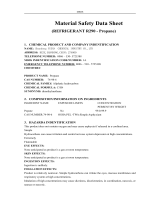 Kegco TCK-1B-4 Specification
Kegco TCK-1B-4 Specification
-
 B. Frank RST User guide
B. Frank RST User guide
-
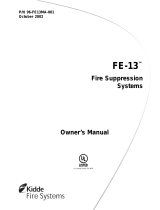 Kidde Fire Systems 96-FE13MA-001 User manual
Kidde Fire Systems 96-FE13MA-001 User manual
-
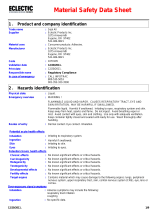 Seal-All 380113 Operating instructions
Seal-All 380113 Operating instructions
-
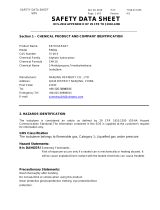 Kegco HBK163B-1NK Template
Kegco HBK163B-1NK Template
-
Kidde 408-466181 User manual
-
Paslode 816007 Installation guide
-
Rosemount ROX GT and GP O2 Analyzers-Rev B Owner's manual
-
Rosemount ROX GT and GP O2 Analyzers-Rev D Owner's manual
-
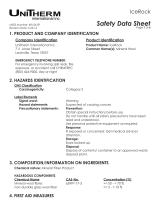 UniTherm International FPW3006 Operating instructions
UniTherm International FPW3006 Operating instructions










